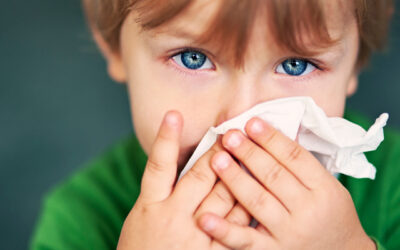For a holiday that is supposed to be all about fun, costumes and treats, Halloween can be big concern for parents with food-allergic children.
Theron McCormick, MD, a pediatric allergist and immunologist at Our Lady of the Lake Children’s Health, shares trick-or-treat tips for those parents.
Over the past 10 years, we’ve seen a significant increase of children with food allergies. Couple that with ever increasing exposure to candy that contain common allergens such as nuts, milk and wheat, and parents are faced with an interesting dilemma.
In the U.S., one in 13 children have a food allergy—that’s roughly two in every classroom. For these children, even a tiny amount of their allergen has the potential to cause a severe reaction. Every year, parents ask Dr. McCormick how they can protect their child, knowing that an allergic reaction can be deadly.
Tips to Keep Treats Safer
So, with Halloween approaching, please consider some of these tips—especially if you are planning a party or hosting children that may have food allergies at your home or office:
- Pass out alternatives to snacks and candy, such as temporary tattoos, stickers, crayons, etc.
- Read labels and look for candy that does not contain any allergy warnings (NO milk, wheat, egg, peanut)
- Different sizes of the exact same treat may contain different ingredient labels based on separate processing plants. Watch out for different allergy warnings!
- Be aware of hidden food allergens. Some lollipops or gummy candies can contain nut allergens.
How to Read Food Labels for Allergens
Worried about how to read a food label? Here are some helpful tips for you to use when stocking your trick or treat basket:
- The Food Allergen Labeling and Consumer Protection Act (FALCPA) requires labeling of the following eight major allergens: milk, eggs, fish, crustacean shellfish, tree nuts (almonds, walnuts, pecans), peanuts, wheat and soybeans.
- Allergens are required to be stated in plain language i.e., milk rather than casein. However, several “non-dairy” treats may still contain a milk protein (sodium caseinate) so it’s important to check every label even if it is marked “non-dairy.”
- All allergens will be listed in the “Ingredients” list OR the “Contains” warning.
- If your candy includes a “May Contain” list of allergens, know that these labels are not required by the FDA and do not share the level of allergen present in the manufacturing facility. Dr. McCormick recommends avoiding these as well.
Read more about making Halloween safer for children with food allergies from the Asthma and Allergy Foundation of America.




